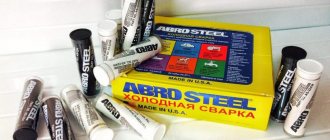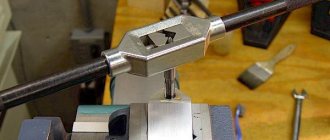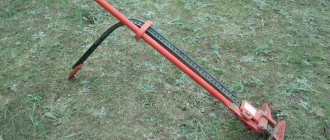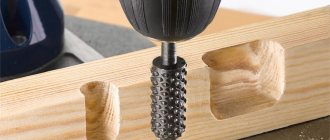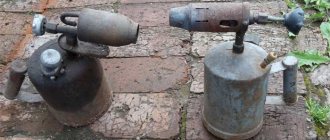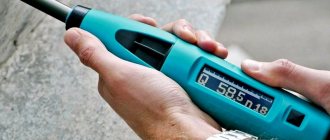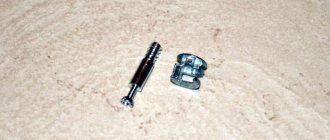Cold welding is a plastic material consisting mainly of epoxy resin. If this material is used correctly, it can withstand heavy loads and connect materials very reliably. The method of using this product depends on its type - it can be one- or two-component.
You can see what this welding looks like in the photo:
Key Features
The use of the material is very simple and does not require welding equipment. This plastic glue is sold (article according to GOST OKPD 2) in a round mini jar, instructions are attached to it. The material hardens in air; it does not need to be provided with a high temperature for hardening.
This product holds not only metals. It can be used to join wood or any other material. High plasticity makes it possible to glue any surface, even those that have a large load. Using liquid welding, you can glue together products from:
- stainless steel;
- ceramics;
- wood;
- become;
- linoleum (for example, Tarkett);
- rubber (PVC);
- copper;
- India;
- polypropylene pipes;
- batteries;
- heating systems and other materials.
IMPORTANT! Although liquid welding is a very strong and reliable material, it is the weakest of all types of welding. If it is possible to work with more reliable joining materials, preference should be given to them.
Advice from experienced welders
For the best adhesion of parts, it is recommended to apply glue to a wet surface. The method is more in demand in problems with pipe leaks. Therefore, when performing repair work, you can not turn off the water.
There are some useful tips to remember:
- When repairing pipes and pipeline components, it is necessary to purchase only a moisture-resistant composition, taking into account constant contact with liquid.
- If you have to urgently repair a leak in a plastic pipe, such a patch must be changed later - the adhesion will be poor.
- To harden the mass faster, you can use a hairdryer with warm air.
- It is worth purchasing only products from trusted manufacturers.
- You should not use material that has passed its expiration date.
Advantages of cold welding:
- There is no heating, which means the structure of the metal will not change.
- You can create a strong seam.
- Cold welding can be used in emergency fire and explosion hazardous areas.
- There is no need for special preparation to perform the work.
Types and composition
Depending on the composition of the product, it can be:
- one-component;
- two-component.
One-component becomes soft after kneading. Two-component welding consists of two materials: epoxy resin with metal dust and a hardener. By mixing these components, a universal adhesive plastic mass is obtained. It's quite liquid. Hardening time ranges from 15 to 60 minutes. You can apply pressure to the connected parts no earlier than 60 minutes after drying.
ATTENTION! It is better to check this data with the instructions. Different manufacturers indicate different operating times for the working mixture and drying times.
To use a two-component composition, you need to mix and knead both parts. After kneading the mixture, work must be done quickly, since restoration of dried material is impossible.
You should always wear gloves when working with this material, since it should be kneaded in your hands. It is better to take thick gloves rather than disposable ones, since the former protect your hands better.
The purpose of the mixtures may also be different. Depending on the method of use, the following types are distinguished:
- For metal components.
- Automotive.
- Universal. Its characteristics allow it to be used in any field. This type bonds steel to non-metallic elements.
- Water resistant. Can be used for contact with water (both cold and hot). Suitable for sanitary ware.
- High temperature. Works in conditions up to 200°C, and some types - up to 1000 degrees. Heat-resistant ones are more expensive.
Depending on the method of application, welding can be:
- suture;
- point (it is correct to use only in cases of point application; in all other situations its principle of operation will be inappropriate);
- butt (only for thin metals, for example, Werner Muller);
- with a shift (used to connect pipes of different sizes, suitable for application to the thread area);
- T-bar (conducts current, used when working with electrical structures).
The quality of the connection of parts depends on the correctly selected type and on following the instructions for use.
Also, welding can be intended for home use (for example, type A) or for professional use (type T).
Popular and high-quality representatives (as reviews say) are: Epoxylin, Abro AS-224 (black), Ermak, Hi Gear Titan (white), Bison (56 g), Remteka, Laurel, Amethyst, Felix (55 g).
Temperature characteristics
The gluing process occurs without heating with plastic deformation. This is good and bad at the same time. Otherwise, without establishing deep interatomic bonds in the parts being connected, but strong enough in normal practice for quickly and efficiently connecting parts, sealing cracks, eliminating leaks, and filling the surface.
Manufacturers' instructions are almost the same when it comes to preparing and using the working composition. Definitely at room temperature 18-20°C, with a deviation of 10 degrees in one direction or another, without changing the initial and, especially, final properties.
Working operating area from -60 to +260°С. High temperature cold welding reaches a maximum of 1316 degrees Celsius.
Advantages and disadvantages
Many people choose to work with liquid welding because it has many advantages. And it is true. Among the main ones are:
- Low price and availability.
- The weld dries quickly.
- Suitable for joining many surfaces.
- More reliable than many glues (for example, “Moment”).
- After completion of work, repaired products may come into contact with food.
- The finished work looks aesthetically pleasing.
- Welding retains its properties in the cold.
- The cost of the product is justified by the characteristics.
- No welding machine required for use.
- No special tools are needed for the job.
- The work is carried out without the use of electrical media.
- No material waste.
- Lack of heating (connection as in space) and, as a result, better aesthetics.
- Possibility of repairing containers that contain explosive or flammable substances.
Among the disadvantages of cold welding, it is difficult to single out particularly serious ones. If you use the product only for its intended purpose and according to the manufacturer's recommendations, there will be no problems with its use.
Which cold welding to choose?
VIEW Cold welding on AliExpress →
Due to the huge range, it can be difficult to identify an obvious leader. Even studying the instructions for a person who has little knowledge of directions will not bring clarity to the situation. To make it easier for you to resolve the issue, we present to your attention the top 3 best cold metal welding tools that you can find on the market in 2022.
1) Weicon VA 110
| Price | ★★★ (3.0 out of 5.0) | Overall attractiveness ★★★★★ 4.0 |
| Seam strength | ★★★★★ (5.0 out of 5.0) | |
| Reviews | ★★★★★ (5.0 out of 5.0) |
Supplied in 60 gram tubes. The cost of one such tube reaches 3,500 rubles, which makes cold welding one of the most expensive options for the average consumer.
Among the advantages, we note the NSF certificate of environmental friendliness + safety of components for human health, high strength of 20 N per square millimeter and high polymerization rate. Disadvantages - 24 hours until complete hardening and the need to apply a thin layer (up to 0.02 centimeters), which requires extreme care from a person during the work process.
2) Weicon RK-1500
| Price | ★★★★ (4.0 out of 5.0) | Overall attractiveness ★★★★★ 4.5 |
| Seam strength | ★★★★★ (5.0 out of 5.0) | |
| Reviews | ★★★★★ (5.0 out of 5.0) |
The best option in terms of price/quality ratio. Works with both light and heavy metals. Can be used for gluing elements joint to joint.
The glue works well on smooth surfaces + it can be applied on both sides, with a total thickness of up to 1 millimeter. The disadvantages are accuracy during application due to the two-component composition, 100% strength only after a day and a high fluidity rate of the activator. Price on the market from 1,200 rubles.
A practical example of the use of cold welding with an explanation of the nuances of use for different materials:
3) Poxipol “Cold welding”
| Price | ★★★★★ (5.0 out of 5.0) | Overall attractiveness ★★★★★ 4.0 |
| Seam strength | ★★★★ (4.0 out of 5.0) | |
| Reviews | ★★★★ (4.0 out of 5.0) |
In terms of price, the most affordable option is from 600 rubles. The weld hardens quickly. The tear test can be carried out after 10 minutes, and for full use a couple of hours of hardening of the seam will be enough.
Among other advantages, we note resistance to aggressive environments and increased adhesion rates. Disadvantages of the product - polymerization 24 hours after use, it will not work for joint welding, and does not perform well in small cracks and overlapping parts.
Other options worth considering include Strong steel stick renewal composite, EpoximaxX and Bison Super Glue Gel. The latter refers to general-purpose cold welding, and therefore, when gluing glass, wood, plastic and other household materials, it will work with a bang.
In any of the presented options, there are detailed instructions on how to use cold welding with a description of the technological nuances of using the current adhesive substance.
Preparing the work surface
Carrying out any cold welding work begins with surface preparation. A wet surface must be wiped to remove any moisture. The best treatment for any surface is done using a degreaser or acetone. It will help dissolve any fat. A dry surface holds liquid welding many times better than one with moisture. Dust, debris and any contaminants should also be removed from the surface.
If desired or necessary, the surfaces to be joined should be cleaned with sandpaper. If this happens, dust removal and degreasing should be repeated.
ADVICE! This measure is necessary to connect perfectly smooth surfaces so that they become slightly rough. The sandpaper should be coarse - number 40-100.
Repair of ceramic products.
To repair ceramics, including, for example, a broken bathroom sink, many manufacturers offer cold welded ceramic compounds. As indicated in the characteristics of the adhesive, it quickly and reliably connects individual fragments of a damaged product, which after repair can be reused within their operating temperature range. The seam obtained at the joints of joined fragments perfectly withstands extreme temperatures and humidity. The material is easy to use and reliably covers chips and cracks in porcelain and earthenware products.
“Cold welding” of ceramic adhesive is usually performed in a rigid two-component version. It is just as ready to use as discussed above for radiator repair.
A possible difficulty in repair work on the restoration of shells and other ceramic products is that it is necessary to collect all or even the largest fragments of the product. It is from them that the “mosaic” will be put together, which will close the resulting gap.
If you plan to repair a crack with a pothole, then in preparation for the repair it is unacceptable to expand the damage in the ceramics (unlike repairing cracks in, say, walls or ceilings). With such attempts, the product may simply break. It will not be possible to get rid of a crack that is a thin line, since the glue simply has nothing to stick to, and the composition applied on top will not increase the strength of the product in any way.
So in this case, the parts to be glued do not require special processing or degreasing. However, in order to improve their adhesion, before gluing it is recommended to heat them to a temperature of approximately 40-50 degrees with a hair dryer.
After “cold welding” of the heated bonded surfaces, they are immediately connected to each other, since this glue hardens very quickly and, accordingly, loses its adhesive properties.
Once all the large parts are glued in place, the remaining "slots" of missing small parts are filled by "cold welding". Rough leveling of the surface is carried out - if possible.
All that remains is to wait until the glue has completely dried, and then treat the repaired area first with coarse sandpaper, then with fine sandpaper, and finally sand the surface.
If necessary, paint can be applied to the sanded area.
Work rules
After carrying out the preparation activities, the actual use of welding follows. The sequence of work looks like this:
- Depending on the type of working mixture (one-component or two-component, preliminary preparation is carried out. If necessary, the compositions are mixed and also kneaded thoroughly.
- The plastic mass is ready, but it retains its plasticity for no more than 3 minutes. It is applied quickly to the area where parts are connected and is immediately leveled.
- If necessary, create pressure, which will additionally facilitate a high-quality connection, use clamps or clamps.
IMPORTANT! If it is necessary to create pressure, the clamps should be prepared in advance. Since the liquid glue will not be liquid for very long, there is a risk of the mass hardening before installing the clamps. Then, after installing them, they will not help connect the surfaces.
You can watch a detailed video on working with liquid welding on problem surfaces.
The connected products can only be used after the composition has completely hardened. You can find out the exact number on the packaging or in the product instructions.
Instructions for use
Despite the simplicity of the process, many people do not know how to properly use cold welding. Below we will talk about the most common errors in the welding process so that we can avoid them in the future.
How long does it take to dry?
There is no single answer to how long it takes for glue to dry. It all depends on the brand of the manufacturer. In this case, you should pay attention to the timing of “primary drying”. This term refers to the time during which the mass already takes its final form and does not undergo changes. At this moment, the seam remains extremely vulnerable, so no unnecessary actions need to be taken. Typically, initial drying occurs within 5-20 minutes, this time should be enough to apply the glue.
Welding can dry in a variety of ways, with the process typically taking 12 to 24 hours.
Although it is advisable to leave the weld to dry for a day, during this time the product will be finally ready for use.
Security measures
Despite the apparent simplicity and harmlessness of the process, when performing cold welding, you must follow the instructions:
- Do not allow welding to come into contact with exposed areas of the body (skin, eyes). If this does happen, you should rinse the welding area with clean water.
- Store in a place out of reach of children or pets.
- Be sure to use gloves and a mask when working with liquid glue. Remember that while working with dry glue may not involve wearing gloves, working with its liquid counterpart directly requires wearing gloves.
- Make sure that welding materials do not get into food.
Errors at work
Despite the simplicity of the process, it is important to know the working rules that will help maintain the quality of your seam:
- Pay attention to the expiration date of the weld. If it has expired, it will lose its properties.
- When preparing a surface for welding, pay attention to the manufacturer's notes, otherwise you won't succeed.
- Do not store leftover glue outdoors as this may cause it to harden.
- The adhesive must be used in accordance with its intended purpose. Models for wood should not be used for ceramic products, etc.
- Pay attention to the proportions when mixing; if you mess something up or don’t calculate it, the welding will be less strong.
Storage rules
Compliance with all storage requirements for the product will allow you to use it throughout its entire shelf life.
- Make sure that the glue is in a tightly closed, airtight container.
- For storage, you must choose a dark and cool place where the sun's rays do not reach and children will not reach.
Interesting facts and tips
When repairing a car with this material, it is recommended to carefully select the desired type of mixture. You should choose a mixture. which has high strength characteristics. They can be partially determined by knowing the temperature of maximum heating of the mixture. The higher it is, the better the quality of the seam.
If cold welding is used to repair large holes, it is recommended that it only be used as a temporary solution to the problem. If possible, the seam should be replaced with a stronger one as soon as possible. This is especially true for parts that are susceptible to pressure. Cold welding has low tensile strength even if it can withstand high temperatures.
From the start of working with the mixture until it hardens, there is no more than 200 seconds. Therefore, before starting to weld parts, you need to think through all the action plans. Access to work surfaces should be maximized and the surface should be carefully prepared. It is advisable to have clamps nearby (if necessary), as well as an assistant to help install them.
The information described above shows that the use of cold welding can be a solution to the problem when making minor repairs or joining parts. Working with this product is very easy and simple, although it has good performance and durability.
Varieties of component
Any material is suitable for effective gluing, the only exception being elastic elements. There are several groups of materials that the binder can easily cope with:
· metal elements;
· synthetic polymers (plastics);
· ceramic products;
· glass;
· floor coverings (linoleum, carpets).
How to use cold welding depends on the materials that are intended to be joined. There are several types of cold welding:
For metal
The use of cold welding for metal is extremely popular among car owners and minor repairs of household appliances. The tool helps to quickly and efficiently resolve difficulties that arise that are associated with the further operation of the vehicle and other equipment.
The bond between the two bonded surfaces is so strong that the repaired part will be in use for many more years.
Important! When using cold welding, you must always take into account how much load a particular part receives. First of all, the adhesive is aimed at temporarily eliminating the problem (crack, chip), so if the opportunity arises, the unit or part should be restored by repairing or replacing it.
For plastic
This type of connection is not used so often, since there are a large number of adhesives for polymers that do an excellent job. Cold welding has found wide application for synthetic polymer materials when it is necessary to repair plastic pipes and equipment.
For joining linoleum, carpets
Suitable for butt jointing of floor coverings. The result exceeds all expectations - the quality of the joint is no worse if double-sided tape was used. This type of soldering is used in construction to connect rubber seals.
For stones
Natural stone is often used for interior decoration. It is quite heavy and not every glue can support such weight. Cold welding for stone based on epoxy resin copes with this task quite well. The peculiarity of the connection lies in the strength of the seam itself. Even if, for some reason, a piece breaks off at the junction of two surfaces, then the rupture occurs through the material, and not through the binder. Cold welding for stones has found wide application in the construction of fireplaces and stoves.
All of the above compositions are distinguished by a reliable connection and fast gluing only if the technology for performing the work is followed according to the instructions.
How to carry out repairs
Connecting parts using cold welding is very simple:
- Prepare the surface. This must be done using sandpaper. It is necessary to leave scratches on the surface being treated, this is necessary for the glue to penetrate into the metal structure. The deeper the scratches, the stronger the seam will be.
- The product is dried. This is done to eliminate unwanted liquids and increase the strength of the attachment.
- The working surface is degreased. After all, grease stains will greatly reduce the effectiveness of cold welding. You can remove fat using acetone.
- The adhesive components are mixed until smooth.
- Then the adhesive mass is carefully applied to the product. This needs to be done very quickly, because the adhesive mass hardens in just a few minutes. If the hole is very large, then it is necessary to seal it with a metal plate (patch), which is attached to the product using cold welding.
